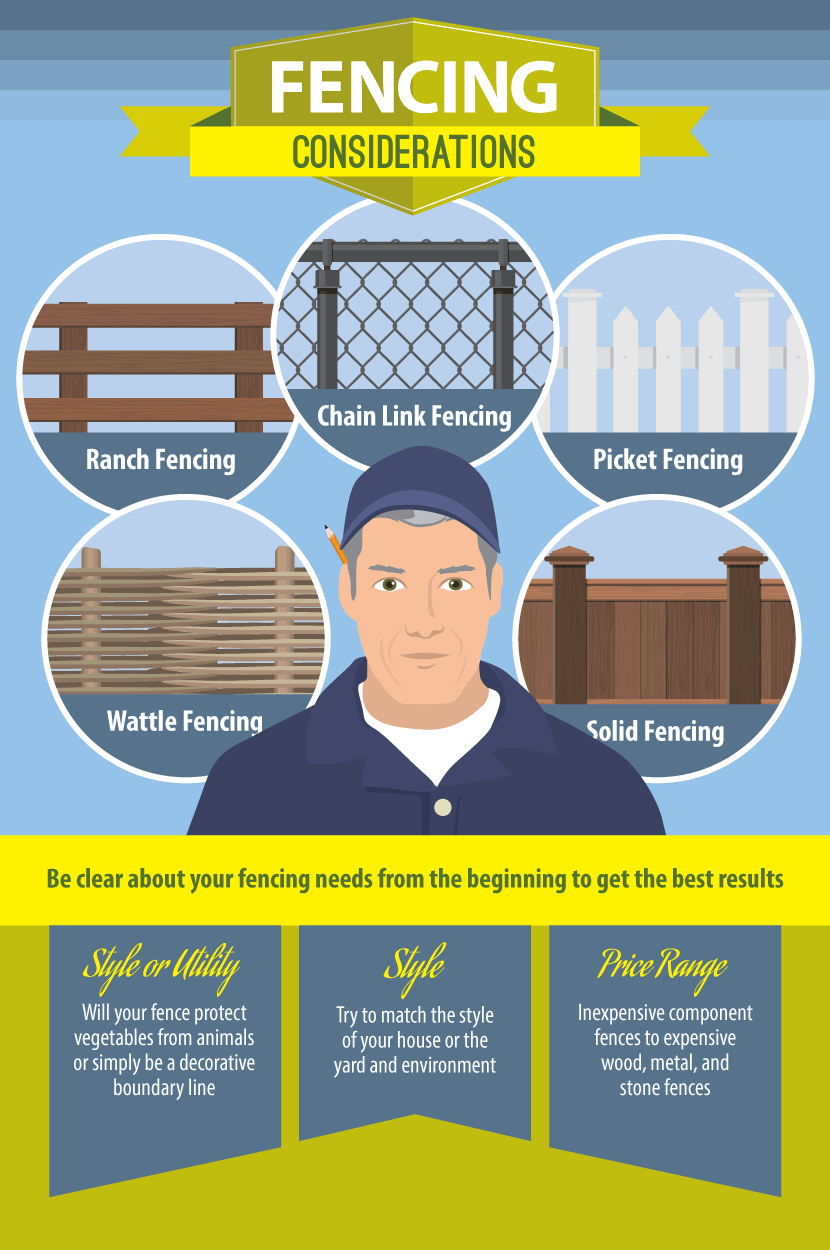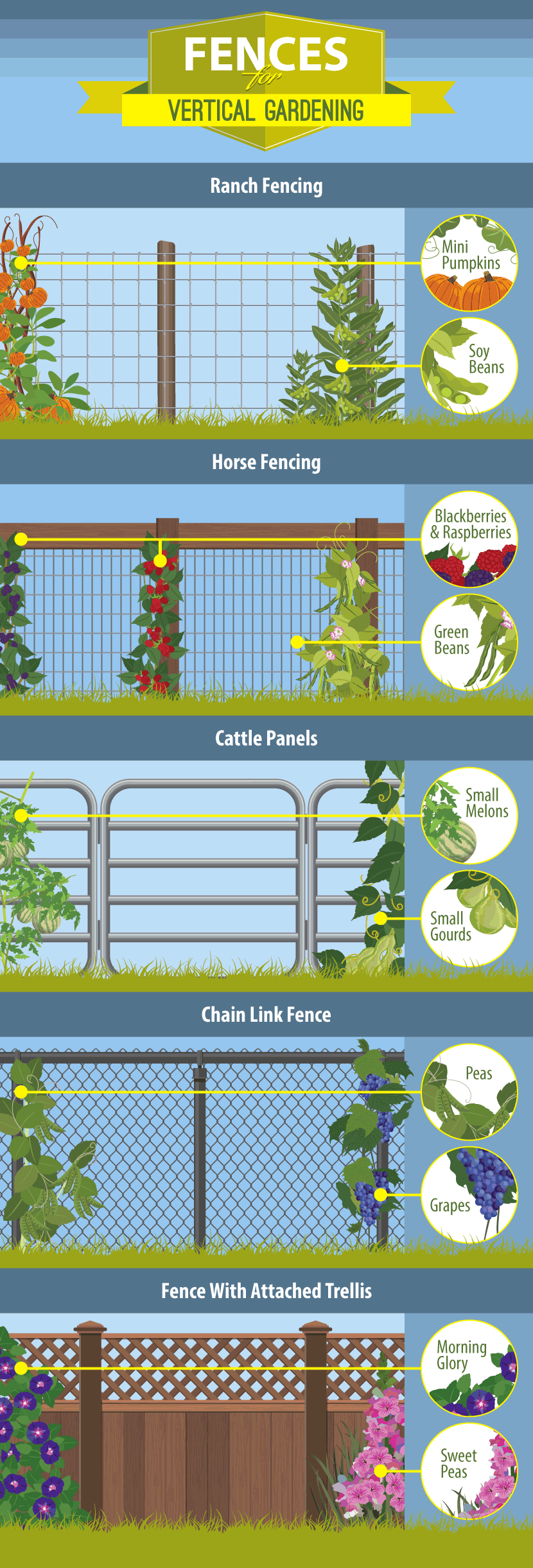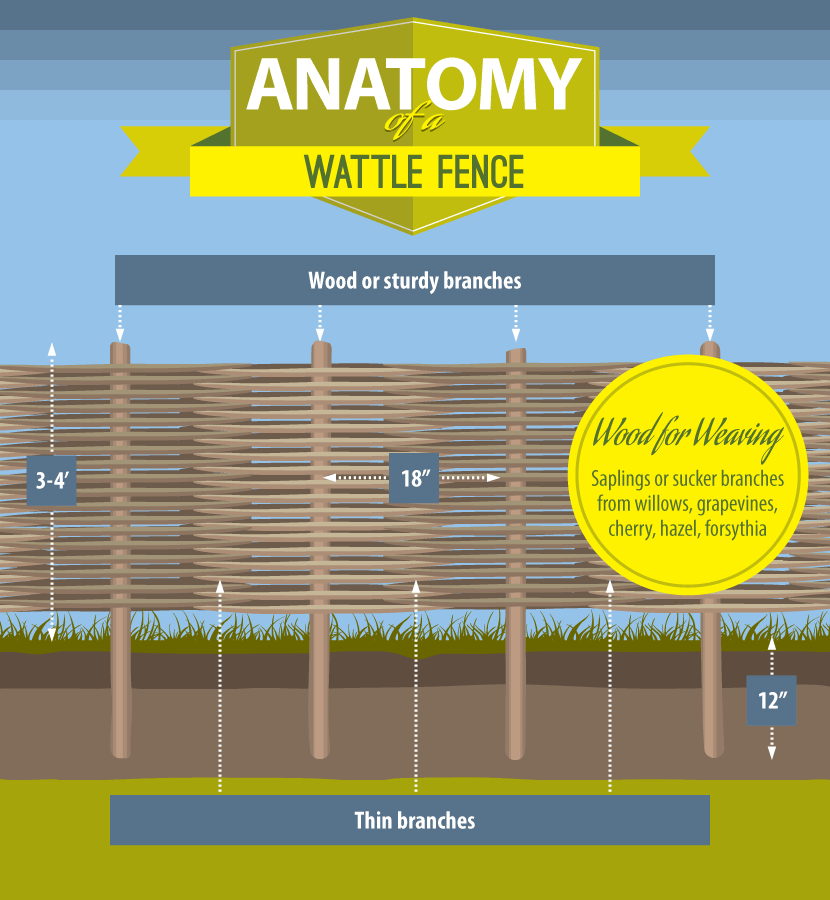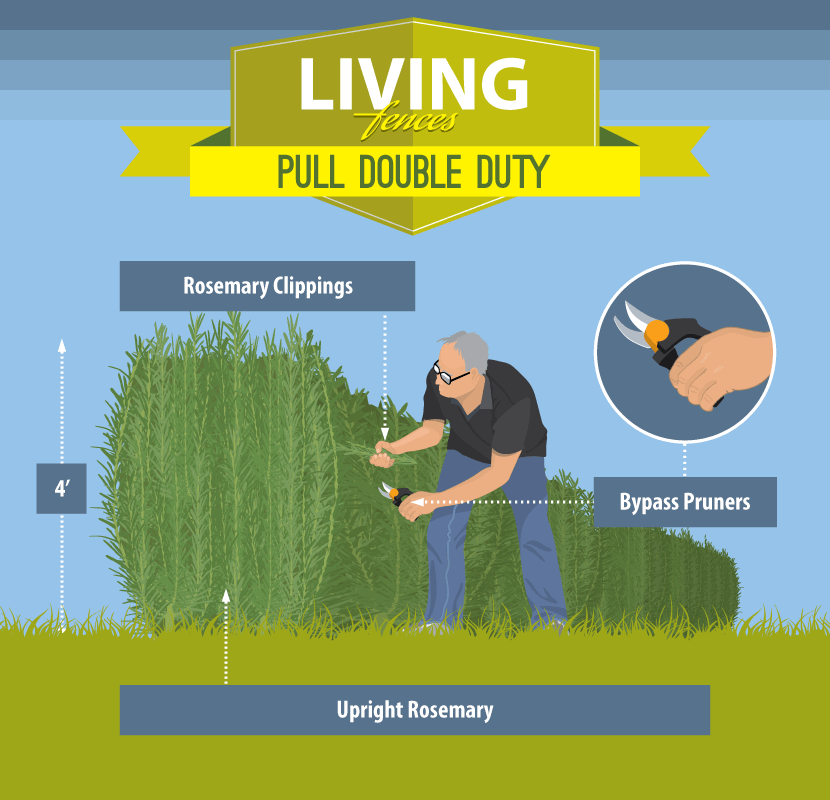Fence Guide
Choosing the Best Fence for Your Garden and Property
Fencing may not be the first item on the list when planning your garden, but it should be the second, or at least the third. For me, the only two things that rank higher are soil amendments, and the plants, because they’re the exciting part.
First and often foremost, a fence can keep uninvited visitors out and your plants safe. Garden fencing is a practical tool for defining yard or garden boundaries. It can also be an artistic statement as it serves as a basic framework for personal style and design.
Let’s talk about three basic fencing strategies – open, solid, and living – and then take a look at specific fencing ideas inside each concept.

Open Garden Fencing
The term "open" refers to the fact that the fencing is "see-through" as opposed to solid. It's my favorite type of garden fencing, as my preference is to be able to see beyond my garden. An open fence can be a structure that simply frames or defines a garden area, or it can be secure enough to keep critters at bay. There's an open fencing strategy to suit every need.
Field and Horse Fencing
This is one of the most common types of vegetable garden fencing across the country. Whether you call it field or horse fencing will depend upon where you live, as people establish local terms for it.
"Field" fencing is typically made up of woven wire squares (approximately 4 inches, sometimes bigger). It's often seen bordering land, livestock pastures, and gardens. "Horse" fencing is made with vertical rectangles that are made too small for a horse hoof to slip through. It may be constructed of welded or woven wire.

Cattle Panels
Cattle panels are 16-foot pieces of welded metal that won't stretch or bend ever. This heavy-duty beast, when set into a wood frame, is much more attractive than it sounds and is basically there for life when attached to wooden posts that have been cemented into the ground. They can be fairly expensive, especially if you have a large area to fence.
Chain-Link Fences
I know what you're thinking...too ugly, right? They certainly walk the line between unattractive and extremely useful, because the only thing negative about chain-link is that it's just not pretty.
On the other hand, it's a master at keeping unwanted varmints out and holds up for a very long time. Chain-link is a great climbing plant support, as well.
Ranch- or Country-Style Fencing
Ranch or country style is popular because it offers a particular aesthetic with an open view, yet clearly defines a boundary line. Obviously, it does nothing to keep wildlife out of the garden, so it's best suited for creating property division or perhaps a fruit orchard.
Ranch-style fencing typically shows up in a couple of ways:
- The traditional wood horizontal boards or "rails" (usually three) which are affixed to upright wooden posts. Although wood rails are traditionally used, vinyl has also become popular. Vinyl fencing is easy to maintain and is generally simple to install.
- Split rail is a country fence that's similar to the typical ranch style. However, in this case, raw split logs are used for the rails instead of straight commercial wood boards. The horizontal rails are either two to three boards.
Picket Fencing
If you fancy cottage or wildflower gardens, you can't go wrong with installing a picket fence. Although it's not entirely see-through, I placed it in the open fencing section because the space between the wooden pickets is usually open enough to have the landscape beyond visible.
Solid Garden Fencing
There's a lot to be said for solid fencing – namely, great garden protection and privacy. It also offers some aesthetically pleasing choices and personality galore.
Solid Wood Fences
Wood fences are constructed as paneled or good-neighbor fencing. Solid fences keep garden-munchers out and make a perfect base for vertical plant supports such as wrought iron, wooden trellises or lattices, espaliered fruit trees, or ornamental shrubs.
Wattle Fences
Wattle fences have an earthy, handmade style and make a natural-looking garden barrier. The wattle fence is created using a framework of long twigs, branches, or reeds that are woven through stakes or poles. Informal and woodland gardens just shine against a wattle fence backdrop.

Bamboo Screens
Bamboo screen as fencing can work for many garden styles. Bamboo can rock natural, tropical, and formal garden settings depending on how it's designed. Bamboo "rolls" can be assembled as solid fencing in minutes once poles or stakes have been set into the ground.
Walls
Garden walls can add both personality and warmth to any garden. Construct them from concrete, cement blocks, brick, dry stone, or stone with mortar. My favorite garden walls are those that are low enough to anchor the view without completely obstructing it.
Living Garden Fences
Living fences are exactly what they sound like: fences made with live plants. What better way to house a garden?
Hedges and Shrubs
Traditional hedge plants such as Laurustinus that are used as a living fence can be utilized in two ways: as a clipped, formal box hedge or they can be left to grow naturally.
Untrimmed (informal) hedges will take on an entirely different look when left to their own devices. One of the perks of not clipping a hedge into a geometric shape is that the plant is allowed to flower.

Roses
Shrub rose species make effective and beautiful living fences and offer nearly continuous blooms all spring and summer. For the best fence effect, plant them in a large group. Don't forget that roses are deciduous plants (they lose their leaves), so this fence will be naked through the winter.
Herbs
Living fencing that pulls double duty as food, fragrance, or crafts is a great way to go. Two plants that can pull this off beautifully are rosemary and lavender. Glossy abelia isn't a culinary option, but it does offer flowery fragrance.
Garden fencing plans and ideas should always be at the top of your planned garden list. They provide protection from marauding herbivores and give you the opportunity to show your personal style. Aside from the gardener, fences are a garden's best friend.
Embed the article on your site

